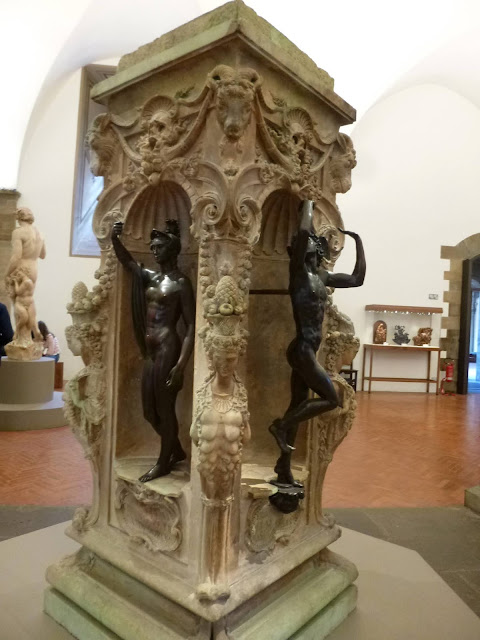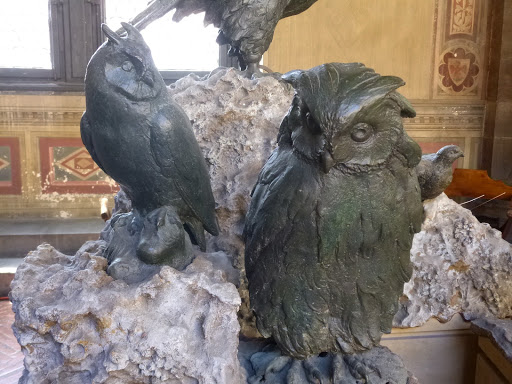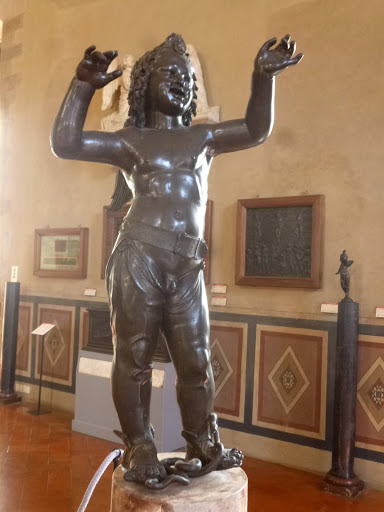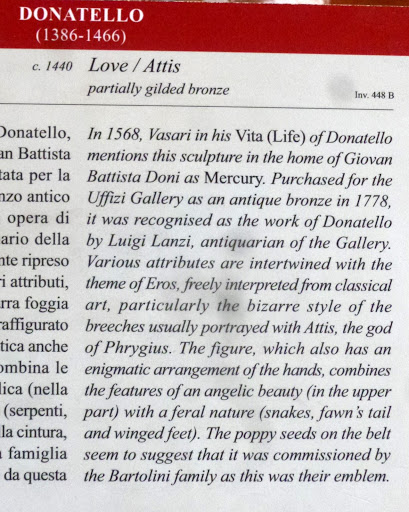Mei 2 : Palazzo e Museo del Bargello
Na mijn bezoek aan de Duomo (zie vorige post) ga ik het Palazzo del Bargello bezoeken. Zoals in alle musea (except de Duomo) krijg ik gratis ingang met mijn gidsenkaart.
Since 1859, the building houses the Museo Nazionale (the first national museum in a unified Italy) which brings together many important Renaissance sculptures and masterpieces of the minor arts from varying periods, including masterpieces by Donatello, Luca della Robbia, Verrocchio, Michelangelo and Cellini.
The museum was subsequently enriched with splendid collections of bronzes, majolica, waxes, enamels, medals, seals, ivories, amber, tapestries, furniture and textiles from the Medici collections and those of private donors. For Renaissance art lovers, the Bargello is to sculpture what the Uffizi is to painting.
The enormous entrance hall has heraldic decorations on the walls with the coats of arms of the podestà (13th-14th centuries). From here, you enter the open courtyard which is irregular and unique. More coats of arms of the podestà are here, and under the porticoes, are insignia of the quarters and districts of the city. Various 16th century statues by Bandinelli, Ammannati, Giambologna and Danti are set against the walls.
The open staircase leads to the Loggia, ornamentals with various works by other 16th century artists including the delightful bronze animals made for the garden of the Medici Villa of Castello.
 |
| Il pescatore (fisher boy) by Vincenzo Gemito |
The Hall closest to the staircase houses important 15th century works by Michelangelo, including Bacchus (1470) and Apollo (1530). There are also works by Giambologna, Cellini, Ammannati and Sansovino who made a Bacchus of his own to compete against Michelangelo's. The bronze bust of Cosimo I by Cellini is also in the same room.
 |
| Michelangelo's Bacchus |
 |
| Giambologna (Jean de Boulogne) "Mercurio volante" |
 |
| Capella della Maddalena |
 |
| Sala delle Maioliche |
The Donatello Room
The first room to the right, once the Salone del Consiglio Generale, is now the Donatello Room and contains many of his works such as St. George (1416) made for the niche in Orsanmichele, the young St. John, the marble David (1408) and the bronze David(1430), the first delicate nude of the Renaissance.
 |
| Andrea & Giovanni della Robia |
 |
| Sala del Trecento (14e Eeuw) |





























































Reacties
Een reactie posten